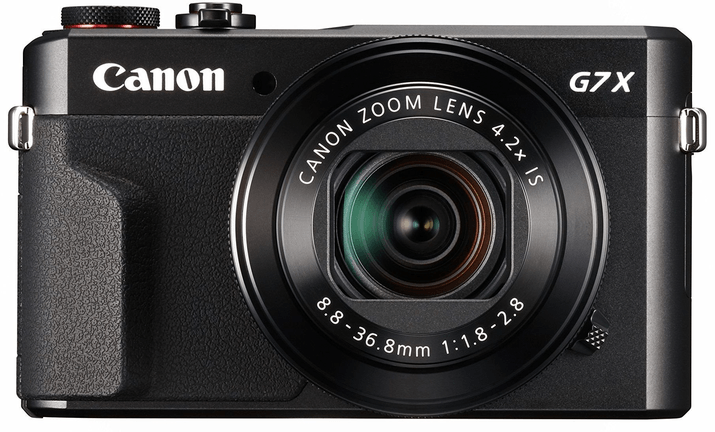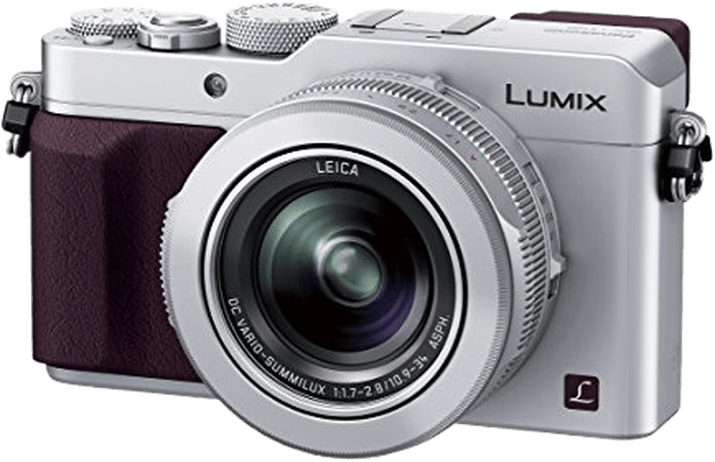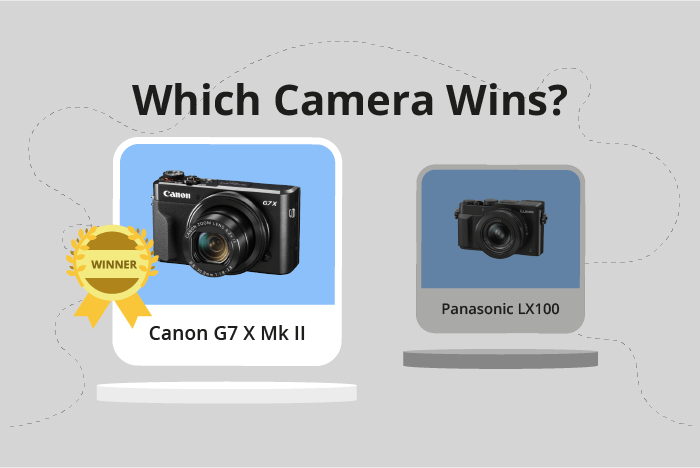Canon PowerShot G7 X Mark II vs Panasonic Lumix DMC-LX100 Comparison
Canon PowerShot G7 X Mark II

Panasonic Lumix DMC-LX100

The Canon PowerShot G7 X Mark II comes out on top with a score of 59/100, while the Panasonic Lumix DMC-LX100 trails behind at 49/100. Both cameras are compact and were launched with a two-year gap, the Canon in 2016 and the Panasonic in 2014. They share similarities in their camera type and launch prices, with the Canon costing $699 and the Panasonic $899.
The Canon G7 X Mark II edges ahead with its smaller size (106 x 61 x 42mm) and lighter weight (319g), making it more portable and user-friendly. On the other hand, the Panasonic LX100 has a slight advantage in being released earlier, giving it a longer presence in the market.
Considering the specifications, the Canon PowerShot G7 X Mark II proves to be a better camera with a higher score, while the Panasonic Lumix DMC-LX100 falls short in comparison.
Canon PowerShot G7 X Mark II vs Panasonic Lumix DMC-LX100 Overview and Optics
The Canon PowerShot G7 X Mark II wins the optics comparison with a score of 58/100, while the Panasonic Lumix DMC-LX100 scores 56/100. Both cameras have a CMOS sensor, a fixed lens mount, and share similar shooting speeds, with the Canon at 8 and the Panasonic at 11.
The Canon PowerShot G7 X Mark II boasts 20 megapixels, a Digic 7 processor, and a DXOMARK score of 79 for its 1″ sensor. This camera excels with higher resolution images, a more advanced processor, and a superior sensor quality, contributing to its higher optics score.
On the other hand, the Panasonic Lumix DMC-LX100 has 12.8 megapixels, a Venus Engine processor, and a DXOMARK score of 67 for its Micro Four Thirds sensor. Despite having fewer megapixels and a lower sensor score, the Panasonic Lumix DMC-LX100 offers image stabilization and a 4:3 aspect ratio, providing steadier shots and a different image composition.
In terms of optics, the Canon PowerShot G7 X Mark II leads with better resolution, processor, and sensor quality. These features result in higher quality images, making it a more desirable option for photographers who prioritize image quality. However, the Panasonic Lumix DMC-LX100 may be a better choice for those who require image stabilization and prefer the 4:3 aspect ratio for their photography needs.
Considering these factors, the Canon PowerShot G7 X Mark II stands out as the better option for optics. However, the Panasonic Lumix DMC-LX100 has its advantages and may still be suitable for specific photography preferences.
Canon PowerShot G7 X Mark II vs Panasonic Lumix DMC-LX100 Video Performance
The Canon PowerShot G7 X Mark II and the Panasonic Lumix DMC-LX100 both have a video score of 70/100, indicating a tie in terms of video capabilities. Both cameras share some common specifications, such as having time-lapse functionality built-in.
The Canon PowerShot G7 X Mark II offers Full HD video resolution with maximum dimensions of 1920 x 1080. Its advantage lies in its higher maximum video frame rate of 60fps, allowing for smoother videos compared to the Panasonic Lumix DMC-LX100, which has a maximum video frame rate of 30fps. This difference in frame rate makes the Canon PowerShot G7 X Mark II more suitable for recording fast-moving subjects or creating slow-motion effects.
On the other hand, the Panasonic Lumix DMC-LX100 excels in offering 4K video resolution, with maximum video dimensions of 3840 x 2160. This higher resolution provides more detail and better image quality in videos compared to the Canon PowerShot G7 X Mark II. However, this advantage comes at the cost of a lower maximum video frame rate.
In terms of video capabilities, the choice between the Canon PowerShot G7 X Mark II and the Panasonic Lumix DMC-LX100 depends on the user’s priorities. If higher frame rates for smoother videos and slow-motion effects are more important, the Canon PowerShot G7 X Mark II is the better choice. However, if higher resolution and image quality take precedence, the Panasonic Lumix DMC-LX100 is the more suitable option. Both cameras have their own strengths and cater to different video recording needs.
Canon PowerShot G7 X Mark II vs Panasonic Lumix DMC-LX100 Features and Benefits
The Canon PowerShot G7 X Mark II outperforms the Panasonic Lumix DMC-LX100 in terms of features, scoring 70/100 compared to the LX100’s 41/100. Both cameras share some common specifications, such as a 3-inch screen size, flip screen, no GPS, and WIFI capabilities.
The G7 X Mark II excels with a higher screen resolution of 1,040,000 dots, compared to the LX100’s 921,000 dots. Additionally, the G7 X Mark II has a touchscreen, which the LX100 lacks. This feature allows for more convenient and efficient camera operation. The G7 X Mark II also includes Bluetooth connectivity, providing users with an additional option for transferring files and controlling the camera remotely.
On the other hand, the LX100 offers limited advantages over the G7 X Mark II. Both cameras have a flip screen, but the presence of a touchscreen on the G7 X Mark II makes it more user-friendly. The LX100 does not have any standout features that would make it a better option than the G7 X Mark II, based on this comparison.
Taking all of these factors into account, the Canon PowerShot G7 X Mark II is the superior camera in terms of features. With a higher screen resolution, touchscreen capabilities, and Bluetooth connectivity, it offers users a more versatile and enjoyable photography experience. The Panasonic Lumix DMC-LX100, while still a capable camera, falls short in comparison, making the G7 X Mark II the clear choice for those seeking a feature-rich camera.
Canon PowerShot G7 X Mark II vs Panasonic Lumix DMC-LX100 Storage and Battery
The Canon PowerShot G7 X Mark II triumphs over the Panasonic Lumix DMC-LX100 in storage and battery, scoring 29 out of 100, compared to the LX100’s 16 points. Both cameras possess one memory card slot and are compatible with SD, SDHC, and SDXC (UHS-I) memory cards.
The G7 X Mark II’s advantage lies in its USB charging capability, which the LX100 lacks. This feature allows for convenient charging options, making the G7 X Mark II more versatile for users on the go.
However, the LX100 does have a slightly longer battery life, offering 300 shots compared to the G7 X Mark II’s 265 shots. This difference might be important for photographers who prioritize longer shooting sessions without needing to recharge.
Taking these factors into account, the Canon PowerShot G7 X Mark II’s USB charging feature makes it a more practical choice for storage and battery needs. On the other hand, the Panasonic Lumix DMC-LX100’s longer battery life may be preferable for some users.
Canon PowerShot G7 X Mark II vs Panasonic Lumix DMC-LX100 – Our Verdict
Are you still undecided about which camera is right for you? Have a look at these popular comparisons that feature the Canon PowerShot G7 X Mark II or the Panasonic Lumix DMC-LX100:

